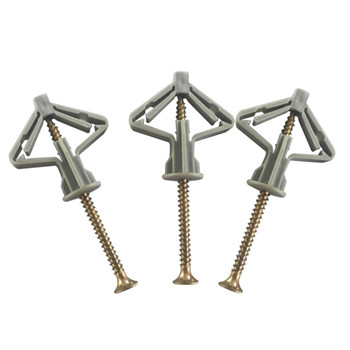

As someone who works in a high-risk environment, the importance of fall protection anchors cannot be overemphasized. When it comes to preventing falls and ensuring that you and your team stay safe, it is important that you have a solid understanding of the role that fall protection anchors play in your work environment.
In this article, I will discuss the importance of fall protection anchors, top factors to consider when choosing a fall protection anchor, and how to install and maintain fall protection anchors.

Fall protection anchors are an essential part of any safety system in a high-risk work environment. They are designed to provide a secure connection point for a worker's fall protection harness, which can help prevent falls and reduce the severity of injuries in the event of a fall.
In addition to providing a secure connection point, fall protection anchors also play a critical role in distributing the force of a fall across a large area, helping to reduce the risk of injury. This is particularly important when working at height, as the force of a fall can be significant.
It is also worth noting that fall protection anchors are required by law in many industries. For example, OSHA (Occupational Safety and Health Administration) requires fall protection anchors to be installed on any surface where workers are at risk of falling six feet or more. Failure to comply with these regulations can result in fines and legal action.
Maintaining and inspecting fall protection anchors is crucial to ensure their effectiveness and the safety of workers. Here are some steps to help you maintain and inspect fall protection anchors:
Regular Inspections:
Perform regular visual inspections of the fall protection anchors. This can be done monthly or as recommended by the manufacturer.
Look for any signs of wear, damage, or corrosion on the anchors.
Check if the anchor points are secure and properly attached to the structure.
Documentation:
Maintain a detailed record of inspections, including dates, findings, and any necessary repairs or replacements.
Document the name and contact information of the person who conducted the inspection.
Cleaning:
Keep the fall protection anchors clean and free from debris.
Regularly remove dirt, dust, and other contaminants that may affect the performance of the anchors.
Load Testing:
Consult the manufacturer's instructions or a competent person to determine the appropriate load testing schedule for your fall protection anchors.
Perform load tests periodically to ensure the anchors can support the required weight.
Professional Inspection:
Engage a competent person or a qualified professional to conduct thorough inspections of the fall protection anchors at least once a year.
The professional should have expertise in fall protection systems and be able to identify any potential issues or hazards.
Repairs and Replacements:
If any damage or wear is identified during an inspection, promptly repair or replace the fall protection anchors as necessary.
Use only manufacturer-approved components and follow their guidelines for repairs and replacements.
Training and Education:
Ensure that workers using fall protection systems are adequately trained in their proper use, inspection, and maintenance.
Provide education on the importance of fall protection anchor maintenance and encourage reporting of any concerns or defects.
When choosing a fall protection anchor, there are several factors that you should consider to ensure that you choose the right product for your needs.
First and foremost, you need to consider the type of work that you will be doing. Different types of anchors are designed for different applications, so it is important that you choose a product that is suitable for your specific needs. For example, if you will be working on a roof, you may need a roof anchor that is designed to be installed on a sloping surface.
You should also consider the load capacity of the anchor. This refers to the maximum weight that the anchor can support. It is important that you choose an anchor with a load capacity that is appropriate for the weight of your workers and any equipment that they will be using.
Other factors to consider include the material and design of the anchor, as well as the ease of installation and maintenance.
Installing fall protection anchors is a complex process that should only be undertaken by trained professionals. However, it is still useful to have a basic understanding of the steps involved in the installation process.
The first step in installing a fall protection anchor is to identify the location where it will be installed. This should be done in accordance with the manufacturer's instructions and any applicable regulations.
Next, the anchor should be attached to the structure using the appropriate hardware. This may involve drilling holes in the structure and securing the anchor with bolts or other fasteners.
Once the anchor is securely attached to the structure, it should be tested to ensure that it can support the required load. This may involve attaching a weight to the anchor and applying force to test its strength.
Finally, the anchor should be inspected regularly to ensure that it remains in good condition. This may involve checking for signs of wear or damage, as well as ensuring that the anchor is free from any obstructions that could interfere with its function.
Regular maintenance and inspection are essential for ensuring the continued safety and effectiveness of fall protection anchors. This involves a range of tasks, including visual inspections, load testing, and documentation.
Visual inspections should be carried out on a regular basis to check for signs of wear or damage. This may involve checking the anchor for cracks, corrosion, or other signs of damage that could affect its strength.
Load testing should also be carried out on a regular basis to ensure that the anchor can support the required load. This may involve attaching a weight to the anchor and applying force to test its strength.
Finally, documentation is an important part of maintaining fall protection anchors. This may involve keeping records of inspections and load tests, as well as documenting any repairs or replacements that are carried out.
Shandong Shenghang Technology Co., Ltd. takes scientific and technological R & D as the guide and is committed to the R & D, production, sales and service of environmental protection and energy-saving products. From 1992, we began to develop and produce high- in China, please contact us now. We provide professional products and first-class service.
Factors to consider for the waterproofing membrane application
2022-03-09Excellent screw supplier
2022-03-03What is TPO waterproof membrane
2021-12-14
Tel: + 0086 15076176199 + 0086 311-87880324
No.3 Mingdu International Building,
Economic and Technological Development
Zone, Linyi
Shandong China
Shandong Shenghang TECHNOLOGY CO.,Ltd